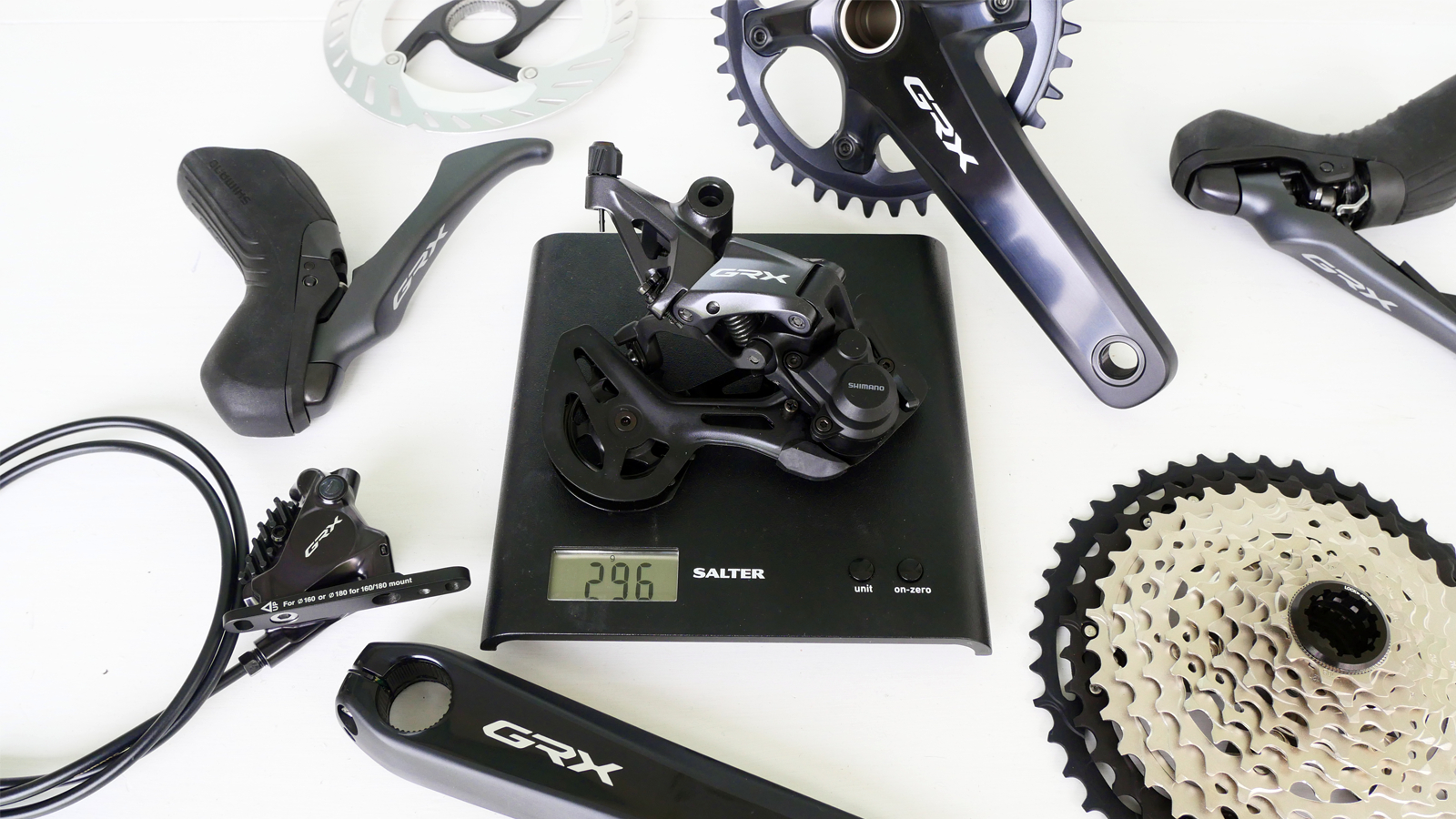Early Verdict
Although Shimano's upcycled GRX updates are more evolutionary than revolutionary, on paper, GRX is still incredibly competitive with the other major gravel bike drivetrains.
Pros
- +
Wide range
- +
Easy compatibility across the Shimano ecosystem
- +
Looks great
- +
Durability
- +
Competitive weights
Cons
- -
Micro Spline limits current gravel wheel options
- -
No electronic option
- -
Non-progressive cassette ratios
Why trust BikePerfect
This month Shimano dropped a long-awaited update to their GRX gravel groupset which features a number of significant updates to bring the OG (Original Gravel) groupset bang up to date, most notably the addition of the coveted 12th gear.
At this point Shimano is playing catch up, as SRAM went 12-speed a while ago and Campagnolo skipped 11 and 12 to go straight to 13-speed on their Ekar drivetrain. SRAM has also been busy electrifying all of its groupsets all the way down to the Apex tier. Campagnolo’s Ekar may still only be mechanical, but claims to be the lightest gravel groupset available.
I just got my hands on a big box bursting with new GRX RX820 components and although I can’t wait to give the new gravel groupset a whirl, I thought it would be worthwhile doing a full rundown of the components and pop everything on the scales of truth and seeing how they match up on paper, before fitting them to a bike. I've also added some comparable weights from Campagnolo Ekar and SRAM Force XPLR AXS for each component – though they're from the manufacturer rather than checked myself.
Design and specification
On the face of it, the new GRX RX820 looks more like an evolution than a revolution. That’s not necessarily a bad thing as the original GRX was still a great groupset with bombproof reliability, comfortable ergonomics, and superb braking performance.
The big headline is that Shimano has added an extra gear, although more interestingly, the GRX groupsets are now split into three different categories. I have the Unbeatable 1x groupset on test which is aimed at general gravel riding and racing and comes with a 10-45t cassette. The double crankset for gravel isn’t dead (yet) with Shimano’s Undroppable 2x12 that has an 11-36t cassette for all-road riders. There’s also a super wide 10-51t equipped Unstoppable groupset for bikepackers and climbers of very steep gradients.
Let's get into some weights and details...
Shimano GRX RX820 groupset component real weights and comparisons
Shimano GRX RX820 derailleur
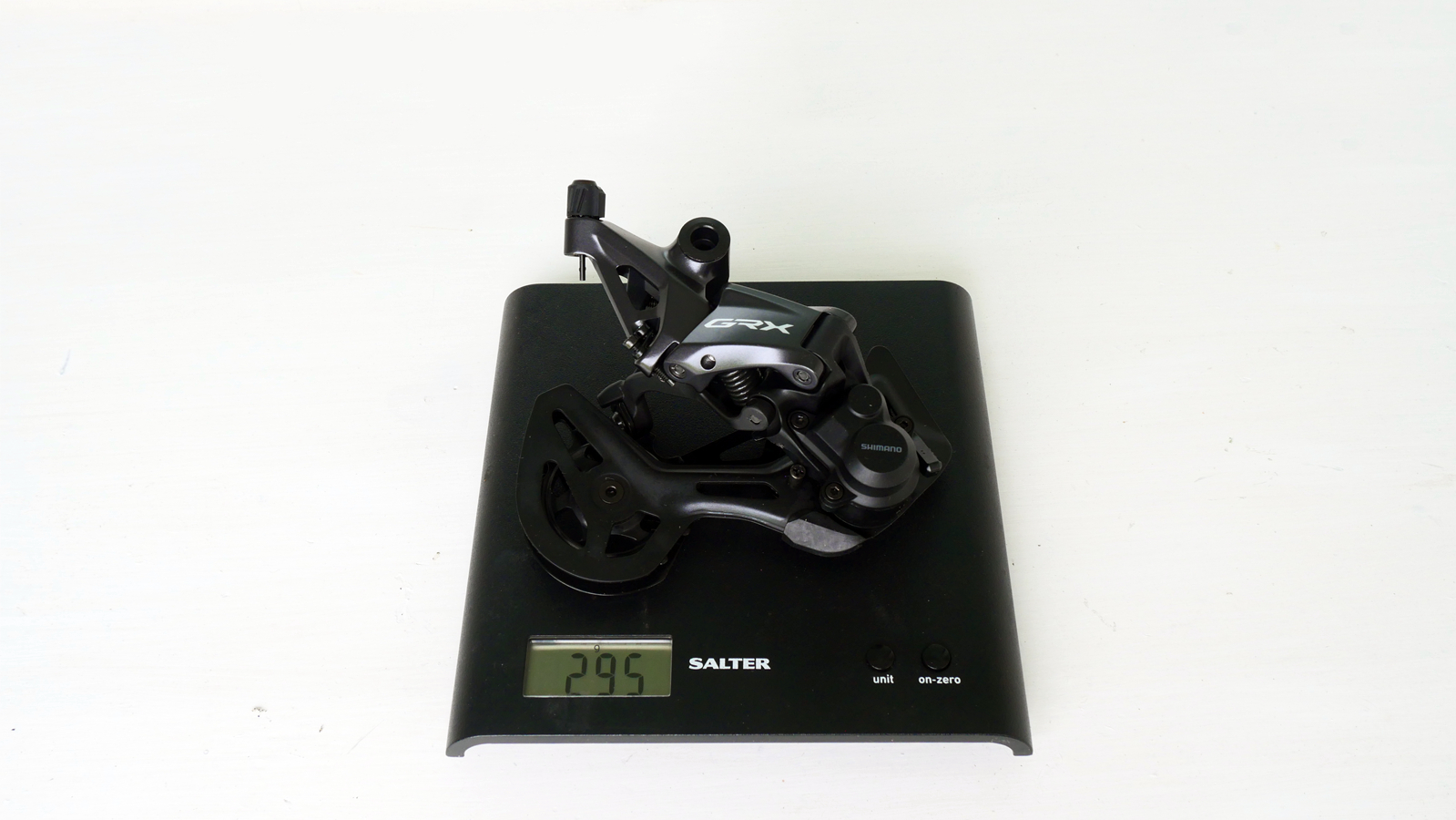
One of the few parts that has received a noticeable update is the new 12-speed rear derailleur. It has a new aesthetic and increased cassette capacity from 11-42t to 10-45t. There appear to be some further refinements to the chain stabilizer, cage, and jockey wheels. In terms of weight, SRAM is at a noticeable disadvantage as the derailleur houses a load of electronics and motors, plus it needs a 24g AXS battery mounted to it.
Shimano GRX RX822: 295g
Campagnolo Ekar: 275g
SRAM Force XPLR AXS: 308g (without battery)
Shimano GRX RX820 cassette
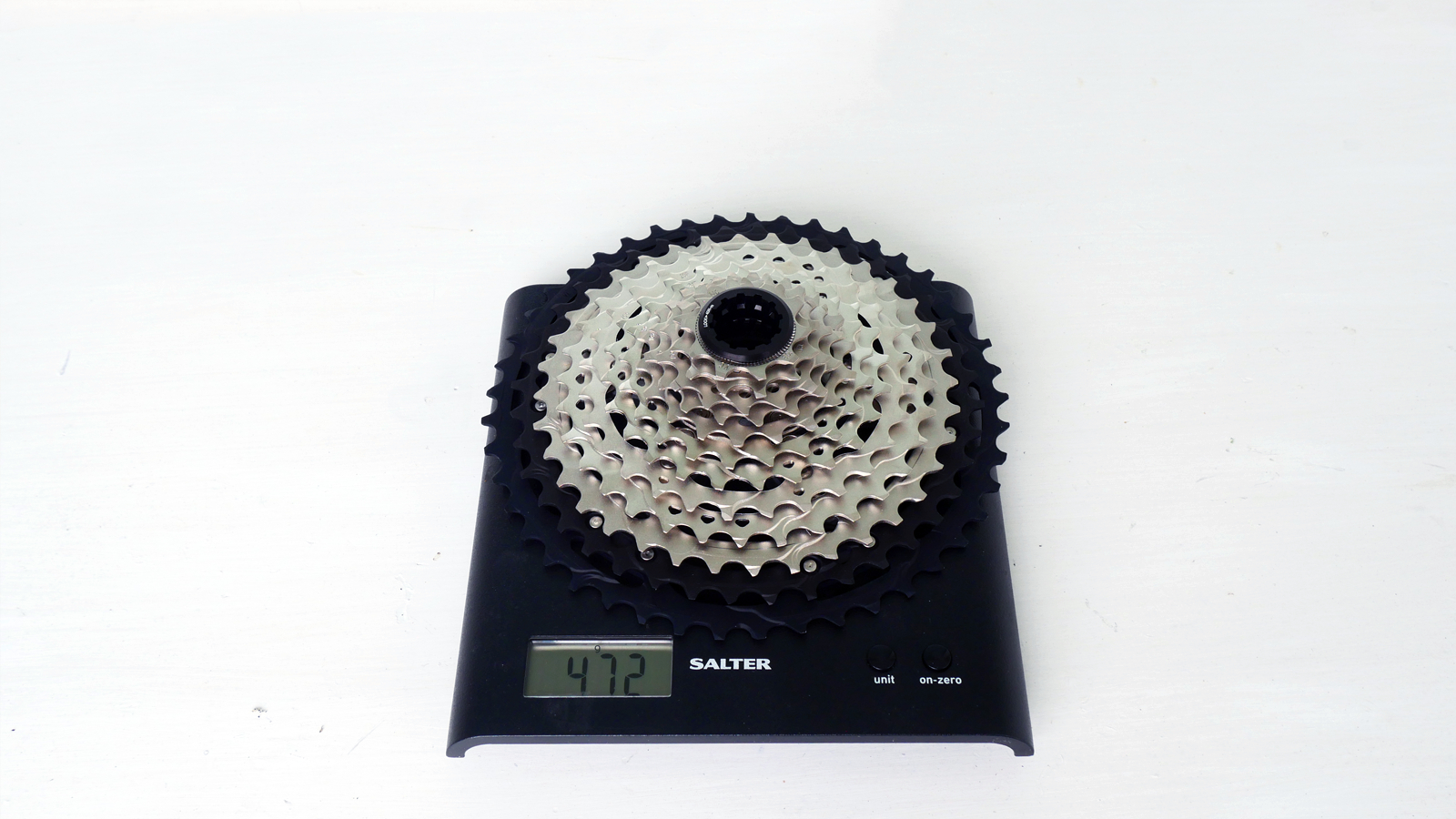
Shimano has simply upcycled their 10-45t XT MTB cassette, which gives the new GRX Unbeatable a 450 percent gear range, which is a shade larger than SRAM Force (440 percent) but just smaller than Ekar (466 percent). However, the GRX Unstoppable version beats them all with a massive 510 percent. If you go with a double you’re looking at 507 percent with the larger 11-36t cassette.
Shimano GRX M810: 472g
Campagnolo Ekar (9-42t): 410g
SRAM Force XPLR AXS (10-44t): 412g
Shimano GRX RX820 chain

All Shimano’s 12sp chains will work with the new GRX, so if you find yourself in desperate need of a new chain there are no complicated flat-top or narrow 13-speed specific compatibility considerations to worry about. You also have the choice of speccing a budget Deore chain right up to a premium XTR / Dura-Ace model, we have a CN-M8100 (XT level) chain with 126 links.
Shimano M8100: 281g (126 links)
Campagnolo Ekar: 242g (117 links / C-Link)
SRAM Force XPLR AXS: 277g (unspecified number of links)
Shimano GRX RX820 crankset
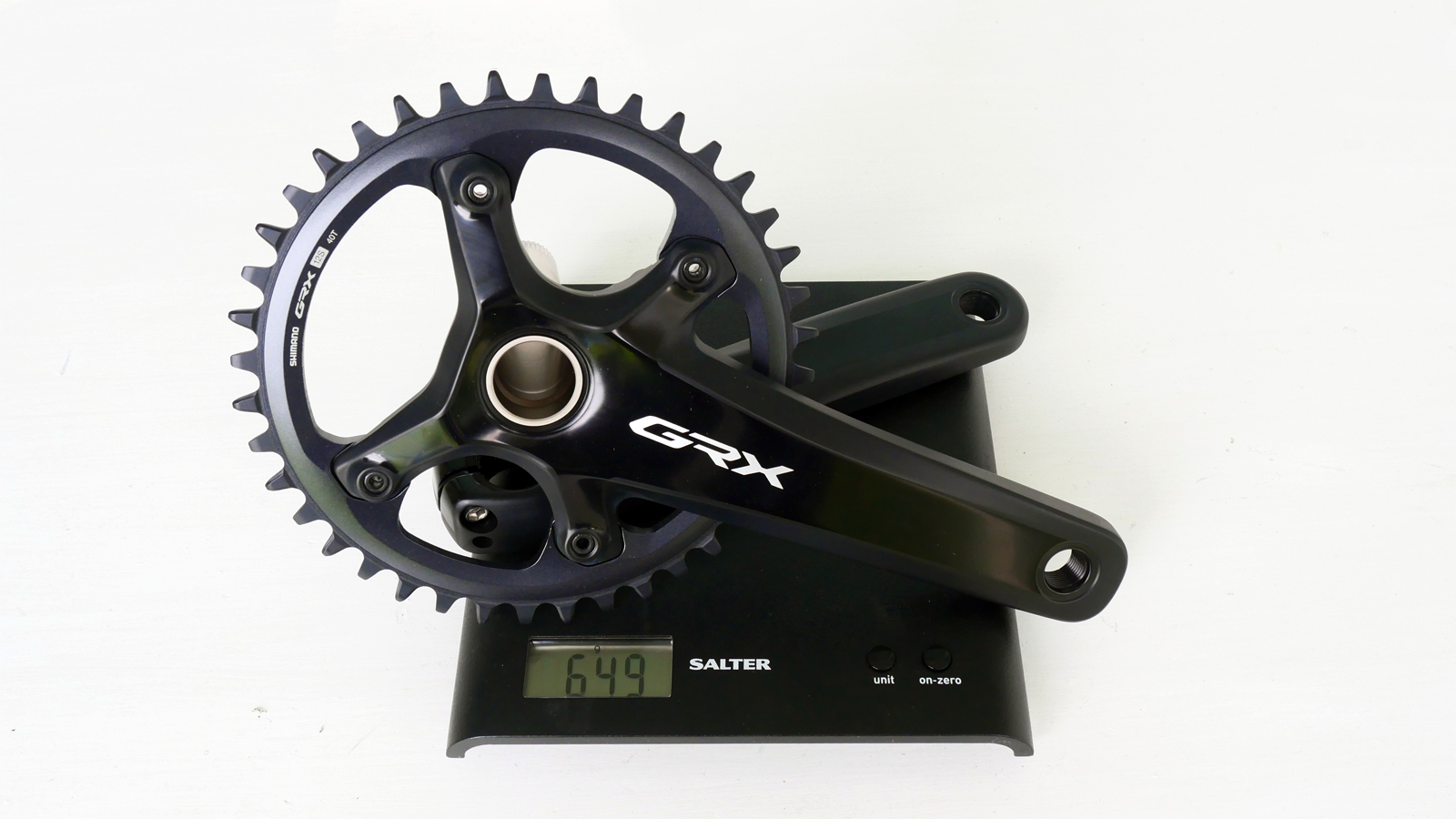
The crankset arm design looks to be fundamentally the same as the RX810 version, albeit spaced for 12-speed. This is reflected in the weight, with the RX820 only 5g heavier than the quoted 11-speed crankset weight.
While GRX is the heaviest between Ekar and Force, there are a few things worth noting. The claimed Force crankset weight is the lightest but SRAM doesn’t specify whether that includes a chainring or the crank length. While the Ekar claimed weight is also lighter, it is made from carbon rather than alloy so that's to be expected.
Shimano GRX RX820-1: 649g (172.5mm, 40t)
Campagnolo Ekar: 615g (172.5mm, 38T)
SRAM Force XPLR AXS: 604g (unspecified size)
Shimano GRX RX820 levers and calipers
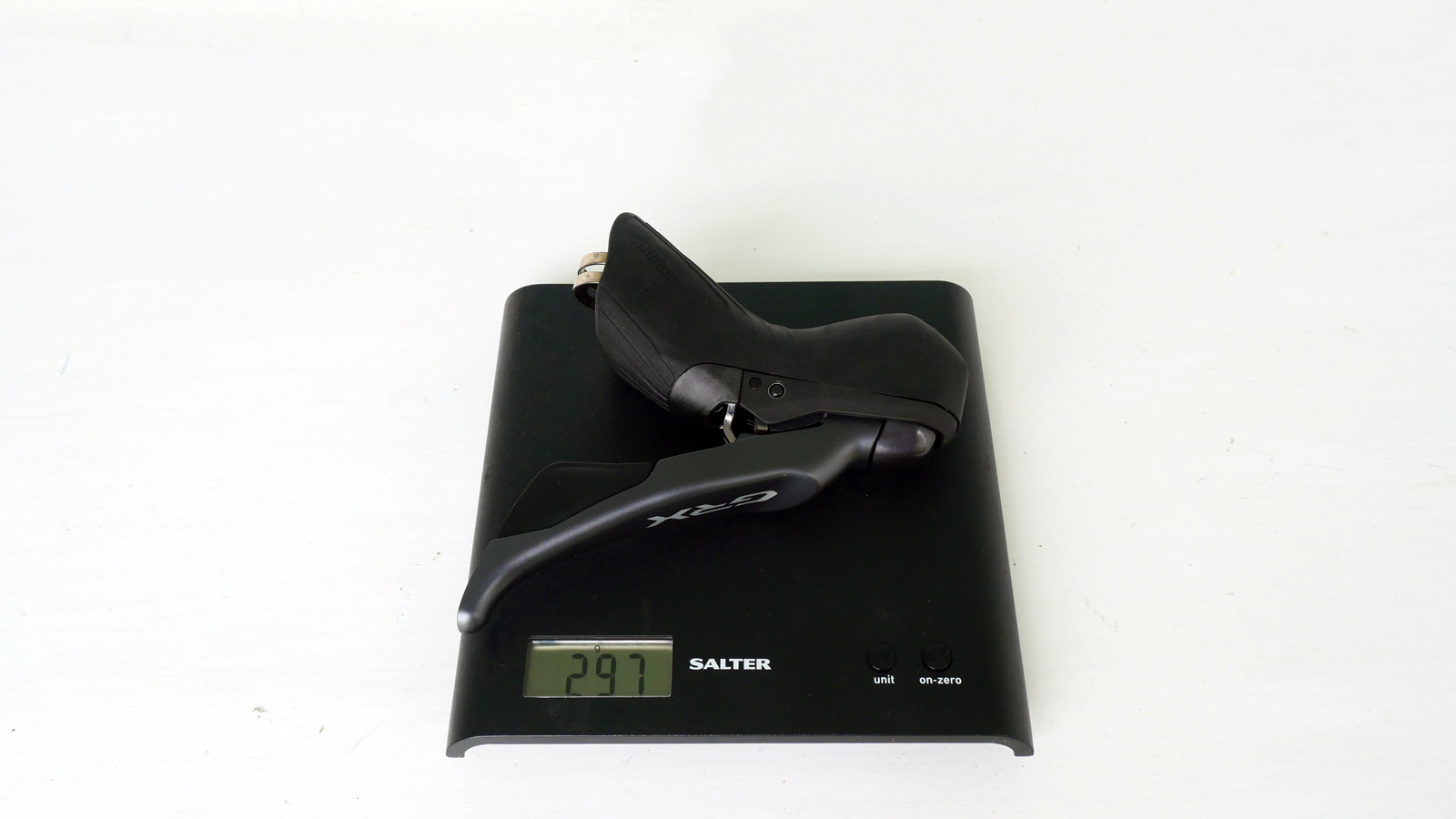
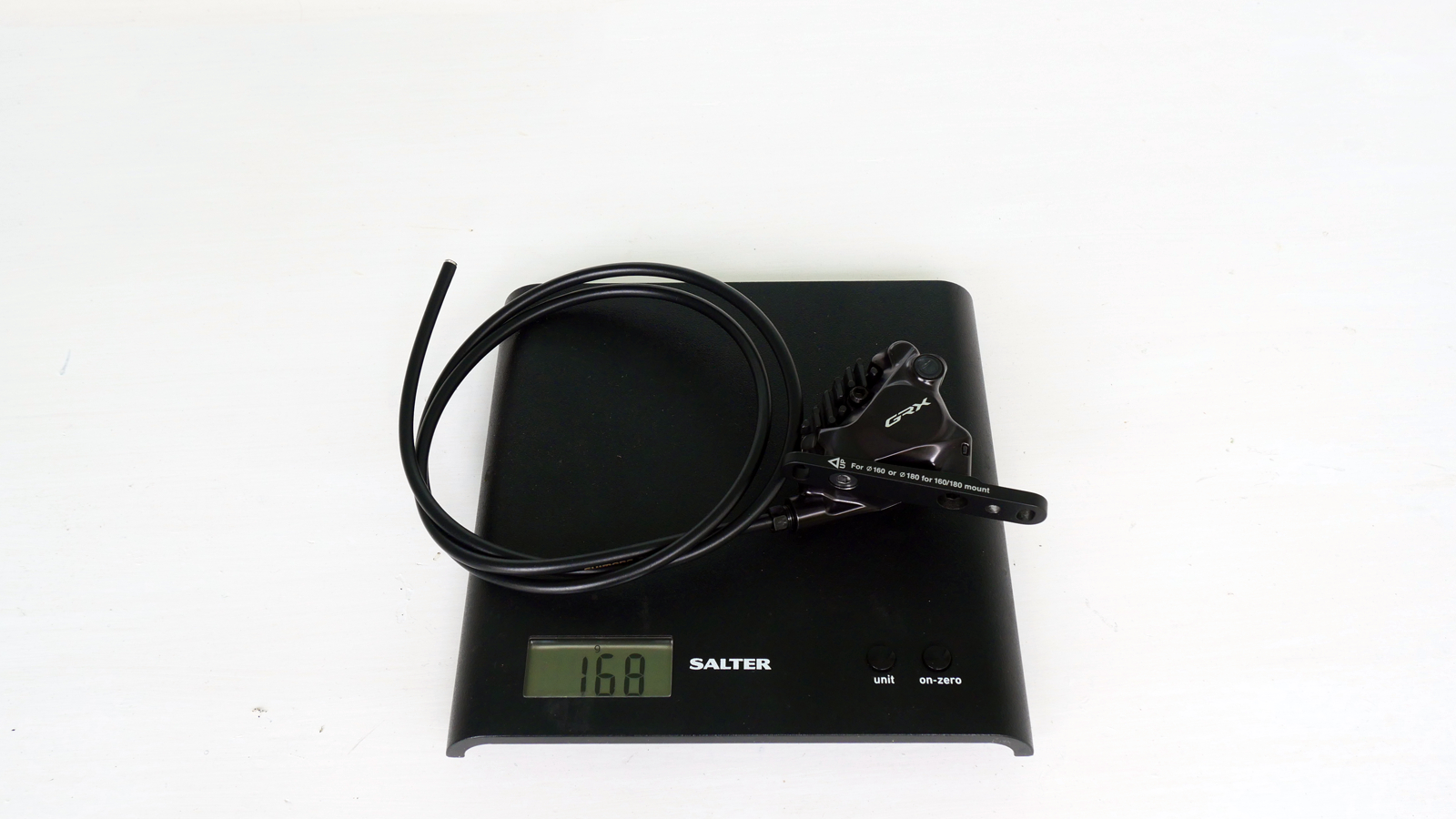
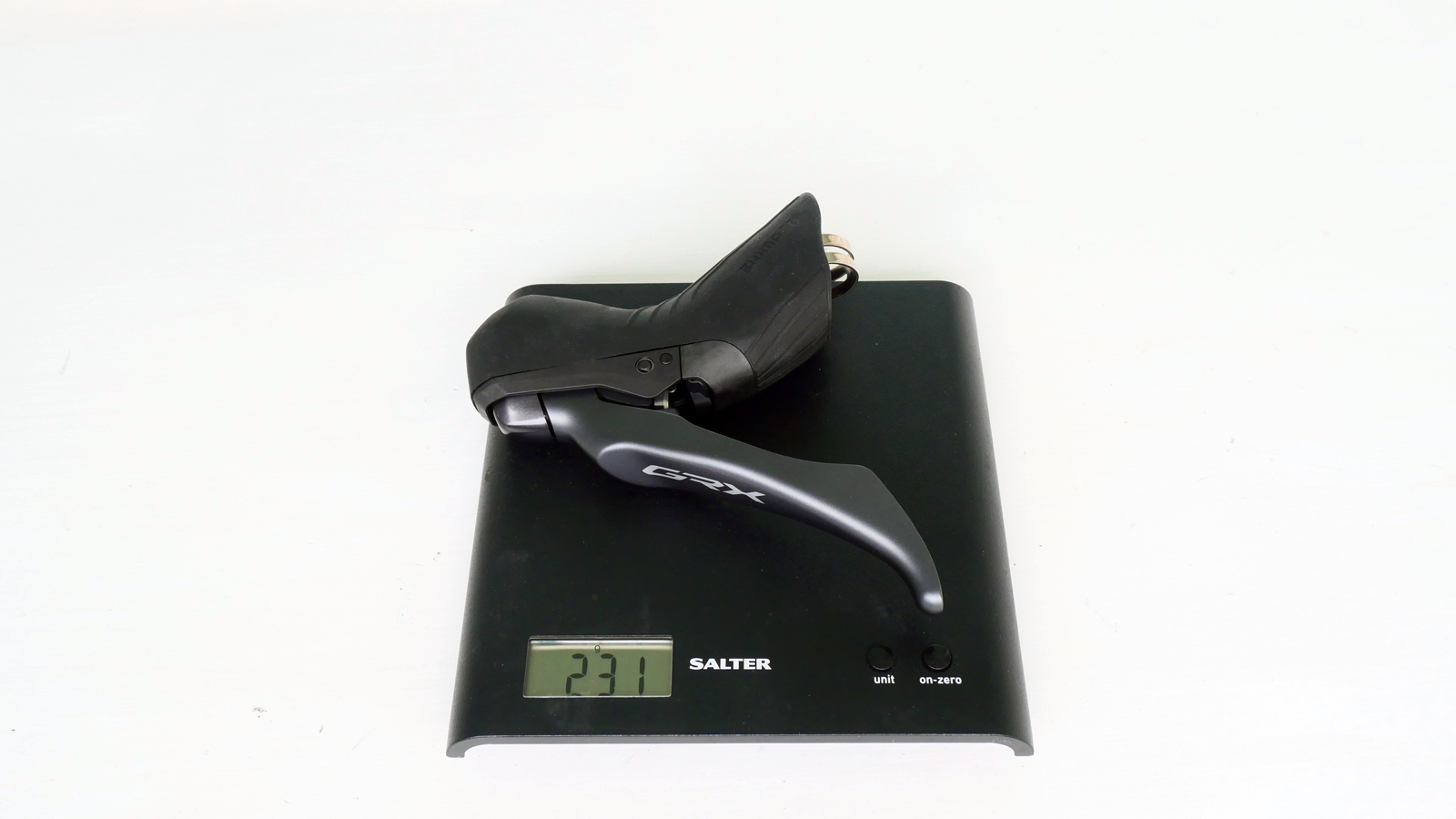
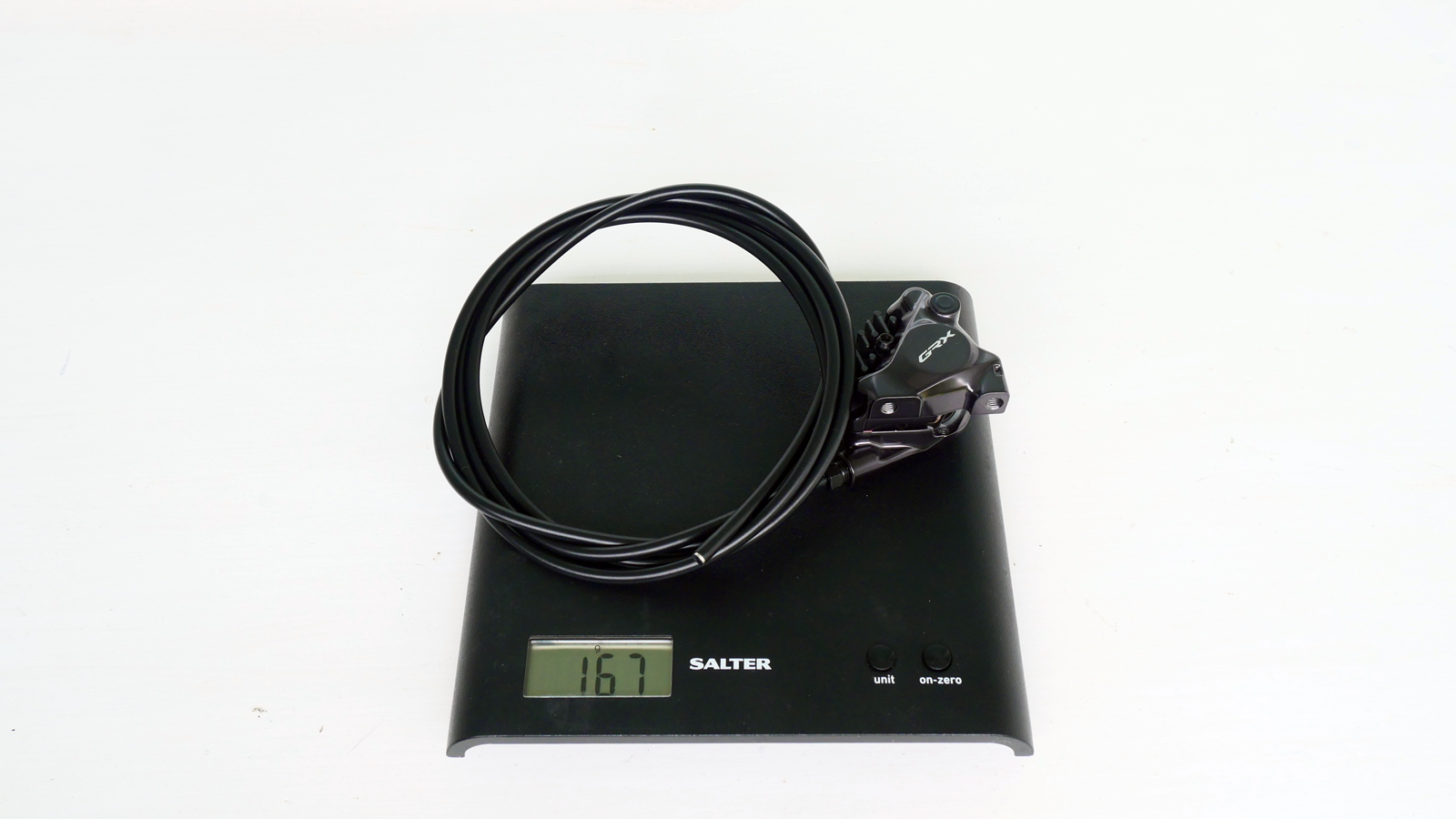
Shimano says they have updated the ergonomics of the levers to work better with flared handlebars, although unless we are missing something, I can’t see any changes to the hood or lever shape. I have the brake-only left-hand lever, so if you have the dropper post or 2x lever, then the extra internals to add a few grams to your setup.
Individual weights for the levers themselves are 297g for the 12sp righthand and 231g for the lever only left. The calipers plus uncut hoses weigh 169g for the front (100cm hose and brake adapter) and 167g for the rear (170cm hose).
Shimano GRX RX820: 864g
Campagnolo Ekar: 625g
SRAM Force XPLR AXS: 839g
Shimano GRX RX820 rotors
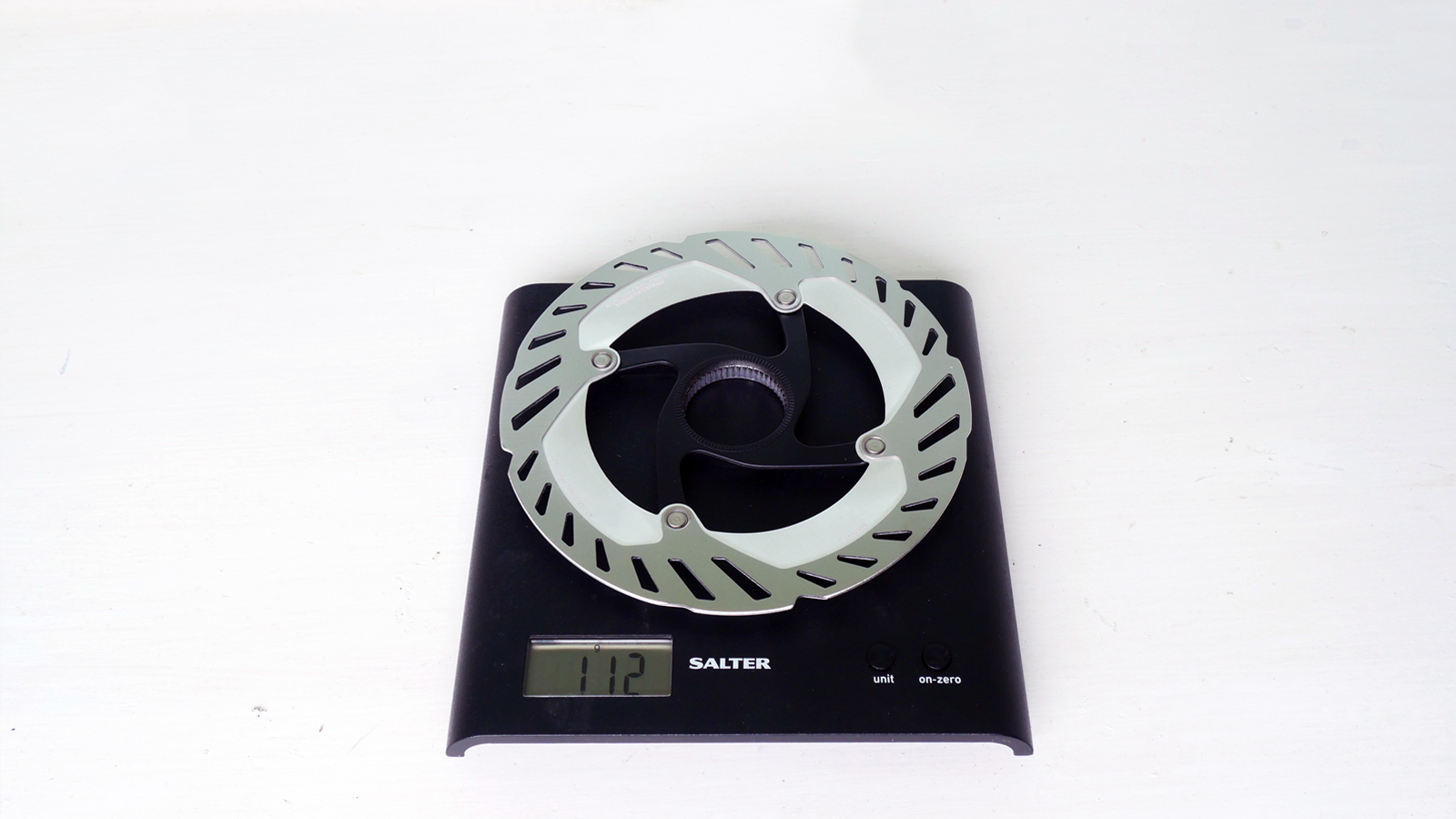
Shimano sent me the 160mm CL800 centerlock rotors with Shimano’s Ice Technologies Freeza tech, which are the same model used with their Ultegra and Deore XT groupsets. Shimano’s rotors are considerably lighter than the others which is a bonus as that saving is doubled.
Shimano GRX CL800: 112g (160mm)
Campagnolo Ekar: 157g (160mm)
SRAM Paceline: 190g (160mm)
Shimano GRX RX820 wheels
I will have a set of the new Micro Spline-equipped GRX RX870 gravel wheels to match, however, they are still to arrive in the post. Shimano quotes the wheelset to be a very competitive 1,394 grams, although I will verify this once I have them in my hands.
Early Verdict
By adding an extra gear and a much wider gear range, Shimano has given us almost everything we could want with the new GRX groupset, although it’s a little frustrating it has taken this long for them to actually do it. The added gear and extra range won’t go unmiss and, other than the initial inconvenience of the Micro Spline freehub standard, it's good to see plenty of cross-compatibility with other Shimano components, dropper posts, 2x cranksets, etc.
It's a shame not to see a Di2 version though, but current gravel trends show there is still plenty of demand for mechanical groupsets, especially amongst the more adventurous riders and bikepackers. Shimano has also been busy updating all their electric road groupsets recently so you never know, there might be a GRX RX820 Di2 groupset in the works.
Although many parts of the GRX 12-speed groupset are fundamentally unchanged, they are still competitive in terms of full groupset weights. Shimano quotes the full GRX RX820 Unbeatable groupset to weigh 2,720.2g, compared to SRAM’s claimed 2,747g (including power meter) for Force XPLR AXS and Campagnolo’s stated 2,385g for Ekar comes out on top when it comes to weight. These are brand supplied weights so should always be taken with a pinch of salt.
Stay tuned for a full Shimano GRX RX820 Unbeatable groupset review.

Graham Cottingham joined the BikePerfect team as our senior tech writer in 2020. With over 20 years of riding experience, he has dabbled in downhill, enduro, and gravel racing. Not afraid of a challenge, Graham has embraced bikepacking over the last few years and likes nothing more than strapping some bags to his bike and covering big miles to explore Scotland's wildernesses. When he isn’t shredding the gnar in the Tweed Valley, sleeping in bushes, or tinkering with bikes, he is writing tech reviews for BikePerfect.
Rides: Cotic SolarisMax, Stooge MK4, 24 Bicycles Le Toy 3, Surly Steamroller
Height: 177cm
Weight: 71kg
What is a hands on review?
'Hands on reviews' are a journalist's first impressions of a piece of kit based on spending some time with it. It may be just a few moments, or a few hours. The important thing is we have been able to play with it ourselves and can give you some sense of what it's like to use, even if it's only an embryonic view.
